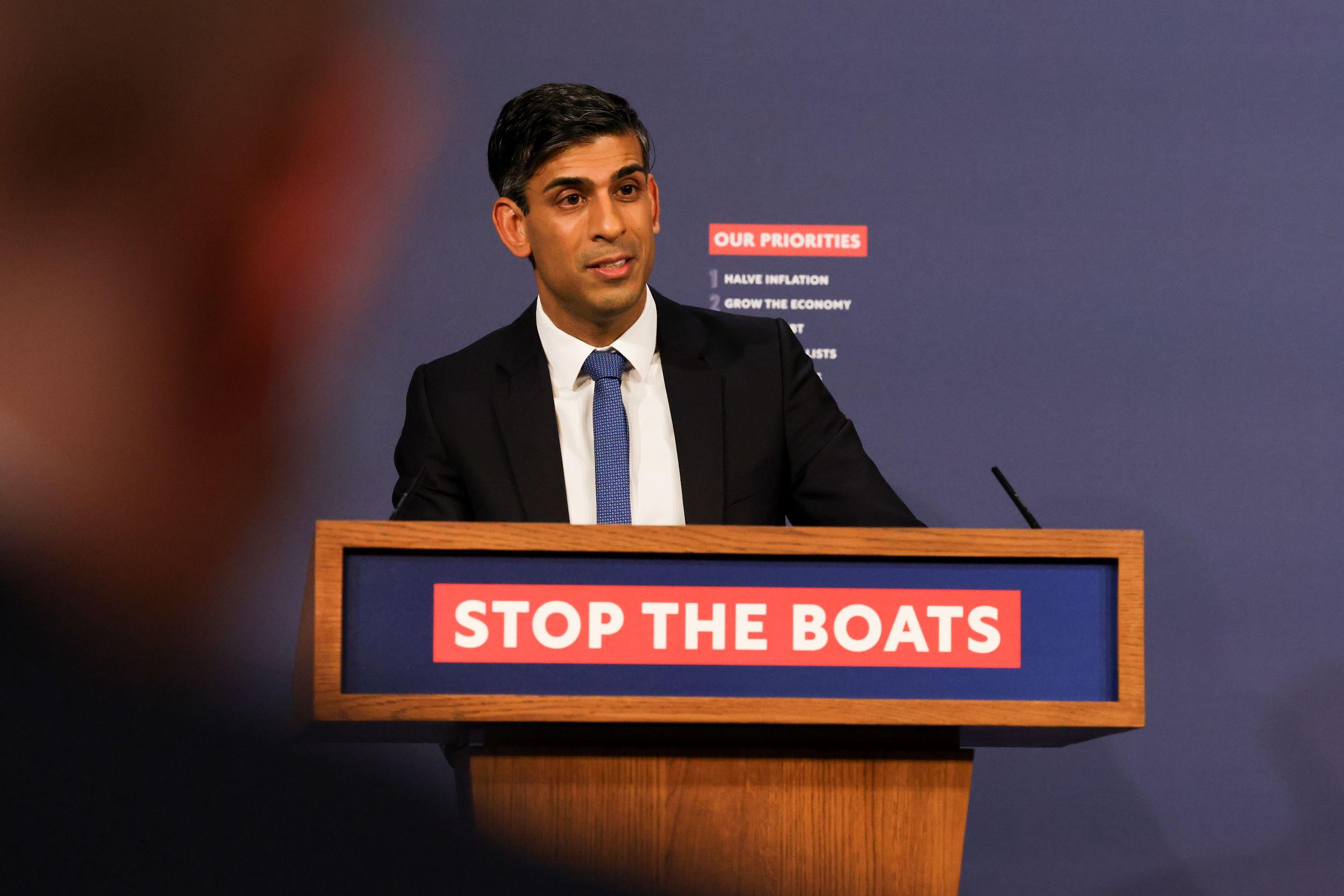 Nicola Sturgeon recently unveiled her government’s well-trailed, long-awaited Brexit paper. The 62-page paper sets out two options. The Scottish Government’s preferred outcome is for the UK to participate fully in the European single market and to remain within the EU’s customs union. Daniel Kenealy argues that these plans may be politically savvy, but are all-but-impossible.
Nicola Sturgeon recently unveiled her government’s well-trailed, long-awaited Brexit paper. The 62-page paper sets out two options. The Scottish Government’s preferred outcome is for the UK to participate fully in the European single market and to remain within the EU’s customs union. Daniel Kenealy argues that these plans may be politically savvy, but are all-but-impossible.
Sturgeon proposes that the UK joins the European Economic Area (EEA) Agreement, by way of membership of the European Free Trade Association (EFTA). This would be the softest Brexit imaginable. Failing that, the paper calls for Scotland “to remain within the EEA and the European Single Market” (para. 107). How, you ask? The UK Government would make it clear, upon triggering Article 50, that it is seeking a differentiated settlement for Scotland. That settlement would likely involve the UK sponsoring a bid for some form of Scottish membership of EFTA, after which Scotland would seek to become party to the EEA Agreement, thus securing full participation in the single market. The final piece of the puzzle, in order for Scotland to participate fully in that market, would be a new devolution settlement that would see wide-ranging powers transferred to the Scottish Parliament. This would, says Nicola Sturgeon, come closest to respecting the wishes of the Scottish people who voted, by 62% to 38%, to remain in the EU whilst also respecting the result, across the UK as a whole, to leave.
The document is certainly an exercise in creative thinking. It would be wrong to categorically label the proposal for Scotland to join the EEA via EFTA, whilst remaining part of a UK that is neither a member of EFTA nor a party to the EEA, as impossible. It will be my previous sentence, and sentences like it, that SNP politicians trot out in the weeks and months ahead. But the proposal is all-but-impossible and the legal, political, and technical barriers standing in the way of it are high, and almost certainly insurmountable. It is telling that Charles Grant – a member of Nicola Sturgeon’s Standing Council on Europe and a man who understands Brussels as well as anyone – labelled it “very hard to make work”.
This article is not the place to explore all of the problems with the proposal, but let me identify just a few. First, membership of EFTA is open to ‘any State’ (Article 56). Scotland is not a state and thus the EFTA Treaty would have to be amended. Beyond that, a sub-state entity like Scotland becoming a party to the EEA Agreement would require the approval of 27 EU member states and the current 3 EEA-EFTA states. Many of these states will be rightly cautious about the precedent set, given their own secessionist movements (Spain had already poured cold water on the Scottish Government proposal).
Furthermore, although the Scottish Government identifies examples of differentiated solutions within the current EEA arrangements they are poor comparators. The paper rightly makes the point that “Denmark is a [EU] member state, but parts of its territory – Greenland and the Faroe Islands – are currently outside the EU and the EEA” (para. 108). The paper references the Faroe Islands example repeatedly and indeed the Faroe Islands have been seeking EFTA membership with Denmark as their sponsor, although that is making slow progress. But to claim that Scotland can be considered similar to the Faroe Islands is akin to claiming that the UK can be considered similar to the Channel Islands. To use arrangements made to accommodate tiny overseas territories as an example for a country of 5.3 million people, possessing major population centres and a diversified economy, is stretching the sinews of credibility.
Finally, in order for Scotland to meet the obligations of EEA-EFTA membership, almost all areas of policy would have to be devolved – immigration, business regulations, employment law, competition policy, product standards to name just a few. This would not be a revision of the devolution settlement; it would be accomplishment of de facto independence via a murky and technical back door.
If the policy proposal is all-but-impossible, why has the Scottish Government gone to the trouble of publishing it? One word: politics. The proposal is politically savvy in at least three ways. First, it allows the SNP to play on the politics of difference, which has proven a highly effective strategy for them. It reminds everybody of the differential referendum result in Scotland, as opposed to the UK as a whole, and the need for distinctive Scottish values and interests to be promoted. It does this not only vis-à-vis the EU but also more broadly as regards immigration, with Nicola Sturgeon able to take a stand in favour of free movement in contrast to the UK Government.
Second, it allows SNP officials to engage in para-diplomacy (where sub-national entities engaging in international relations). Whilst forms of economic and cultural para-diplomacy are fairly common, political para-diplomacy is less common and tends to be employed by sub-national governments seeking greater autonomy or independence. It involves seeking recognition and legitimacy internationally as something more than a region. When local leaders are seen in international contexts, negotiating and battling for the interests of their territory, this can operate as a form of nation building. It is something that the SNP have attempted to do since coming to power in 2007. Brexit, and the pursuit of a differentiated deal for Scotland, have allowed for this type of activity.
Third, it taps into the argument that the UK Government and/or Westminster do not defend Scotland’s interests. My friend Stuart MacLennan – with whom I’ve published on the Scotland-EU relationship – pithily and accurately sums it up: “From a nationalist perspective, it makes good practical sense to march supporters to the top of the EEA hill, only for big, bad Westminster to march them back down again. But for the Scottish Government to present itself as pursuing a policy it must surely know has no chance of success is fundamentally dishonest”. I agree. It is dishonest. And the paper is shallow in terms of policy: many pages are taken up by a rehashing of the importance of the Scotland-EU relationship and when examples are used they are questionable ones.
The question now is what happens next? Theresa May yesterday played down the idea of a differentiated settlement. But the ball remains in her court. In the New Year attention will focus on the details of the deal that the UK Government will seek to make with the EU. And in March we are told Article 50 will be triggered. If Nicola Sturgeon’s proposals are largely shunned by the UK Government – as they almost certainly will be – then the ball will be back in her court. Alex Salmond has recently and boldly asserted that he thinks the SNP would score a victory in a second independence referendum. And Sturgeon, in her foreword to yesterday’s paper, maintained a second independence referendum as an option (p. viii). Given the current state of public opinion , this may well be bluff and bluster. At the very least a rejection of these proposals by Theresa May could set the stage for another showdown between the Scottish and UK Governments, this time over the politics of a second independence referendum.
____
This post was originally posted on the Brexit blog. Featured image credit: Kenneth Halley, CC BY-SA 4.0
 Daniel Kenealy is Lecturer at the University of Edinburgh where he teaches and researches devolution and EU politics. He is the co-editor of The European Union: How Does it Work? (Oxford University Press, 2015), has published on Scotland’s relationship with the EU, and was expert adviser to the Scottish Parliament’s EU Committee during 2013-14.
Daniel Kenealy is Lecturer at the University of Edinburgh where he teaches and researches devolution and EU politics. He is the co-editor of The European Union: How Does it Work? (Oxford University Press, 2015), has published on Scotland’s relationship with the EU, and was expert adviser to the Scottish Parliament’s EU Committee during 2013-14.








Excellent analysis. Thanks.
Also, as the majority of UK territorial waters are Scottish but the EEA doesn’t cover fisheries – Scotland wouldn’t be part of the Common Fisheries Policy either (like Norway)
The technical difficulty in taking Scotland into EFTA might appear daunting, but not half as daunting as the unbelievable, unprecedented project of taking the UK out of the EU, let alone the single market and the customs union.
That’s true, but the Scottish proposal is essentially to do both.
I agree with this analysis of the Scottish proposals: clever and unworkable.
The trouble with Scottish politics is that every question is viewed primarily through the lens of whether it will make independence more or less likely. So elements of SNP are quite relaxed about Brexit because they see it as boosting the case for independence.
Second, Scotland is heavily intertwined with England economically, socially, politically and by ties of affection. And it is one thing to wish away a Scotland/England border. It is another to make it actually go away. The paper makes much of the UK/ Irish prime minsters’ expressed wish not to have a hard border between NI and the Republic. The paper could make rather more of the lack of any concrete proposals for avoiding having one if Brexit actually takes place.
So, whether Scotland is independent or in the UK it seems to me to be of vital importance to an EU-leaning Scotland that the UK/ Rest of UK should be in the EU.
That suggests a right order for doing things. First, the SNP should aim to keep the UK in the EU. Second, once that has been resolved the SNP should consider independence.
At present the SNP are committed to voting against the Article 50 notification. Since most English and Welsh MPs face Leave constituencies and will not join them in the Lobby, that is just gesture politics.
The SNP should build on Nicola Sturgeon’s line that there may be a justification for a second Brexit referendum and seek to amend the government’s Brexit legislation to obtain a referendum on the terms of Brexit.
Labour are not supporting a referendum on the terms, so at the moment the odds are against. But it is a more credible outcome since MPs would not be voting to reject the June vote but to build on it, referring back to the electorate the decision in the next stage of the process.
While some Brexiteers do manage it, it is really quite difficult to object to more democracy.
More on Facebook: Campaign for the Real Referendum – on the Terms of Brexit
@ Michael – From Scotland’s perceptive, it voted to stay and England/Wales voted to Brexit. The terms for the latter leaving are for it to decide but if it doesn’t include full membership of the EU single market (for the UK as whole or solo Scotland) then I wouldn’t count on Scotland not opting to dissolve the UK.
Scotland is essentially seeking to stay in the EEA (via EFTA) even if the rUK opts to leave it.
Scotland might be ‘heavily intertwined with England economically, socially, politically and by ties of affection’ but sometimes you need to move on to a new relationship.
Yes, I understand that.
My point is that independent Scotland in the EU/EEA would be better off if England was also in the EU. (Exports to rest of UK are worth £48.5 billion compared with £11.6 billion to EU – 2014 wikipedia page, economy of Scotland)
So it would be worth Scotland’s while to prevent Brexit, and only then leave the UK.
But I understand that UK-Remain would reduce the desire for Scottish independence and so might not be welcome to nationalists. But perhaps the erection of a trade barrier hitting two thirds of your exports would also put people off voting for independence.
You are clearly assuming that trade is only possible within the same state.
The EEA isn’t a Customs Union but a FTA meaning that Scotland can do whatever deals it wishes with the rUK and still have full access to the EU single market including Financial Service Passporting.
Also, Rules of Origin for the EEA mean that only Scottish produced goods will have access not goods from rUK shipped via Scotland. Companies based in Scotland would have free access to the EU and rUK – better than being in the rUK or even EU.
I am sorry that I was not clear.
As I understand it the SNP’s position for an independent Scotland is to be in the EU. EEA is a fallback.
Whichever, it will be easier for Scotland if England is in the EU/EEA. It is not the end of the world if not, but EU/EEA Scotland selling to an England not in either would have to ensure for example that goods and services met English rules, which might be different from EU/EEA rules.